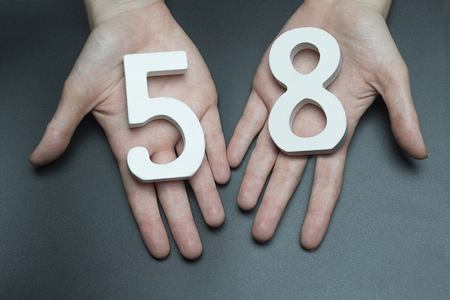Introduction to Hand Shape Variations
The United Kingdom, with its rich tapestry of history and culture, presents a fascinating landscape for the study of hand shape variations. Across England, Scotland, Wales, and Northern Ireland, subtle differences in hand morphology can be observed, shaped by centuries of migration, intermarriage, and regional customs. These variations are not merely physical; they are also imbued with cultural meanings that reflect the unique identities of each region. From ancient Celtic traditions to the influences of Anglo-Saxon and Norse settlers, the diversity found in British hand shapes tells a story as intricate as the land itself. By understanding these patterns, we gain insight into how regional heritage and historical events have subtly influenced both the form and significance of our hands across the UK.
2. Regional Distinctions in Hand Shapes
The United Kingdom is renowned for its rich tapestry of regional identities, and this diversity is subtly reflected in the variations of hand shapes observed across different areas. From the rugged Highlands of Scotland to the rolling hills of Wales, the bustling cities of England, and the historic landscapes of Northern Ireland, distinctive hand shape patterns emerge, often shaped by local ancestry, occupational traditions, and environmental influences.
Notable Differences by Region
Each region in the UK tends to exhibit unique characteristics when it comes to hand shapes. These differences are not only physical but sometimes also woven into local culture and folklore. Below is an overview highlighting these regional distinctions:
| Region | Common Hand Shape Traits | Cultural Associations |
|---|---|---|
| Scotland | Broad palms, shorter fingers | Linked to practical work such as farming and fishing; seen as a sign of resilience and strength |
| Wales | Tapered fingers, flexible joints | Often associated with artistry and music; hands thought to reflect creative spirit |
| Northern Ireland | Robust hands, square-shaped palms | Tied to craftsmanship and traditional trades; regarded as emblematic of steadfastness |
| England (North) | Larger hands, prominent knuckles | Historically linked with industrial labour; interpreted as evidence of diligence and endurance |
| England (South) | Slimmer fingers, elongated palms | Sometimes connected with mercantile or clerical heritage; considered indicative of dexterity and adaptability |
Underlying Influences on Hand Shape Variation
The variation in hand shapes can be attributed to a combination of genetic inheritance and adaptation to local environments. For instance, communities with a history rooted in manual labour or crafts often display more robust hand forms. In contrast, areas known for artistic or academic pursuits may reveal finer finger structure among inhabitants. Moreover, these regional differences are sometimes celebrated in local proverbs and stories, further embedding hand shape significance within British cultural identity.
![]()
3. Cultural Meanings Attributed to Hand Shapes
Throughout the United Kingdom, hand shapes have long been imbued with cultural significance that extends far beyond their physical appearance. Each region brings its own traditional interpretations, folklore, and superstitions to the reading of hands, resulting in a rich and varied tapestry of beliefs.
Traditional Interpretations Across Regions
In England, particularly in rural counties such as Yorkshire and Cornwall, a square palm is traditionally seen as a sign of steadfastness and reliability. Local lore suggests that individuals with such hands are destined for practical trades or leadership within their communities. Meanwhile, in Scotland, a long-fingered hand—often referred to as the “bard’s hand”—is said to indicate creativity and an affinity for storytelling, reflecting Scotland’s deep-rooted appreciation for oral tradition and poetry.
Folklore and Superstitions
Welsh folklore holds its own unique views. For example, it is believed that those with pointed fingers possess a touch of the mystical or otherworldly—a trait often associated with healers or wise folk in village communities. Some areas in Wales maintain the superstition that a cross-shaped crease on the palm bestows good fortune and protection against misfortune, a belief still quietly observed during local fairs and gatherings.
Modern Echoes of Old Beliefs
Even today, echoes of these traditional beliefs persist in subtle ways. In Northern Ireland, for instance, older generations may still remark upon the farmer’s hand, broad and strong, as a mark of industriousness and honesty. While modern science may have overtaken many aspects of palmistry, these regional associations with hand shapes continue to influence first impressions and local identity.
The enduring presence of these customs demonstrates how cultural heritage remains interwoven with daily life across the UK. Whether through whispered superstitions or cherished family stories, the meanings attributed to hand shapes provide an intriguing glimpse into the shared values and historical narratives of Britain’s diverse regions.
4. Everyday Language and Expressions Involving Hands
The language of the British Isles is richly embroidered with idioms and expressions that centre upon the hands, offering unique insights into regional character, values, and subtle differences in social outlook. Each corner of the United Kingdom brings its own linguistic flair to hand-related sayings, echoing centuries of local tradition and communal experience.
Idiomatic Expressions: A Regional Overview
From Cornwall to the Highlands, hand-related phrases both unite and distinguish communities. For example, in Northern England, you might hear someone “giving a hand” meaning to lend physical assistance—straightforward and practical, reflecting the region’s reputation for directness. In contrast, Londoners may describe someone as having “sticky fingers,” hinting at light-fingered tendencies or mischief, a phrase tinged with urban wit.
Common UK Hand Idioms by Region
| Region | Idiom/Phrase | Meaning |
|---|---|---|
| Scotland | “He’s got a heavy hand” | A person who is strict or harsh in their approach |
| Northern England | “To give a hand” | To help or assist physically |
| London & South East | “Sticky fingers” | Someone prone to stealing or mischief |
| Northern Ireland | “Put your hand to it” | To make an effort or try something new |
| Wales | “Hand in glove” | Describing a close relationship or partnership |
Cultural Attitudes and Beliefs Reflected in Language
These expressions are more than mere turns of phrase; they reveal how different regions perceive work ethic, trust, cooperation, and even suspicion. In areas where manual trades have long been central to local life, such as the Midlands and North West England, phrases about “turning one’s hand” to various tasks are spoken with pride, underlining a culture of adaptability and skill. In the rural Southwest, saying someone has a “good pair of hands” remains a high compliment—suggesting dependability and craftsmanship.
Modern Usage and Adaptation
While some idioms have faded with changing times, others have evolved or taken on new meanings in urban settings or through younger generations. The enduring presence of these expressions across the UK landscape continues to shape everyday communication, reinforcing both unity and charming regional distinction. Understanding these nuances deepens our appreciation for how language both reflects and shapes our collective identity—right down to the very shape of our hands.
5. Hand Shape and Social Identity
Within the intricate social fabric of the United Kingdom, hand shape is often subtly entwined with perceptions of identity, class, and regional pride. Historically, physical characteristics—hands included—have been woven into the narrative of British class distinctions. For example, slender, long fingers were once associated with aristocracy or those engaged in learned professions, such as scholars and artists. In contrast, broader palms and shorter fingers might be linked to manual labourers or those hailing from industrial regions like the North of England or South Wales.
Social identity through hand shape also emerges in professional settings. In trades such as carpentry or farming, a firm handshake and calloused hands are signs of diligence and experience, qualities that command respect within these communities. Conversely, professions in finance or academia may favour refined gestures and softer hands, subtly reflecting their own codes of conduct and social expectations.
Regional pride is yet another facet where hand shapes carry meaning. In Scotland, for instance, robust hands are celebrated as emblems of resilience against harsh climates and demanding landscapes. Similarly, the Cornish might take pride in hands shaped by generations of mining or fishing. These physical attributes become badges of honour, connecting individuals to their local history and collective identity.
It is important to note that while these perceptions persist in the popular imagination, modern Britain is increasingly diverse and cosmopolitan. Yet, echoes of these traditional associations linger in everyday conversation and humour. Phrases like “strong as a Geordie’s grip” or “delicate as a London pianist’s fingers” reveal how hand shapes continue to serve as shorthand for deeper social meanings.
Ultimately, the relationship between hand shape and social identity in the UK remains complex—a blend of old stereotypes, regional pride, and evolving cultural values. Whether seen as markers of class heritage or symbols of communal belonging, the hands tell stories that stretch far beyond mere physical form.
6. Contemporary Perspectives and Research
Modern scholarship has brought fresh insight into the study of hand shape variations across the United Kingdom, blending scientific inquiry with evolving social attitudes. Whereas earlier generations might have regarded hand shape as a matter for palmistry or folklore, today’s research draws on fields such as genetics, anthropology, and even psychology to explore its deeper significance. Recent studies conducted at universities in England, Scotland, and Wales have examined correlations between regional ancestry and prevalent hand forms, suggesting that historical migration patterns continue to leave subtle marks upon the nation’s population.
Within British society, the meaning attributed to hand shape has shifted considerably. While some communities retain an interest in traditional interpretations—such as viewing square hands as a sign of practicality or slender fingers as a mark of artistic temperament—these views are now balanced by a more pragmatic outlook. Social scientists note that although physical characteristics may sometimes influence first impressions, they hold little sway over modern notions of identity or capability.
On a cultural level, there is an increasing awareness of diversity and individuality. The British public tends to celebrate regional differences in appearance, including those manifest in hand shapes, as part of a broader appreciation for the United Kingdom’s rich heritage. Educational initiatives and media representations often highlight these variations not as curiosities but as natural expressions of local history and genetic inheritance.
In summary, contemporary perspectives regard hand shape variation less as a determinant of fate or character and more as a testament to the intricate tapestry of Britain’s people. Ongoing research continues to uncover subtle connections between our physical traits and our shared pasts, whilst societal attitudes embrace inclusivity and respect for individual uniqueness.


